I tried the Azure Function Deployment with Github actions and it was successful.
Initially, When I deployed the Function it was not visible, Refer below:-

Make sure your init.py and function.json is inside one directory and other files are outside that directory for the deployment to work successfully, Refer below:-
Reference:- SO Thread answer by jsprovoke
Now, I deployed the Function with Github action and the Function was visible in the Portal refer below:-
Refer my complete github workflow in this Link.
name: Build and deploy Python project to Azure Function App - siliconfunc12
on:
push:
branches:
- main
workflow_dispatch:
env:
AZURE_FUNCTIONAPP_PACKAGE_PATH: '.' # set this to the path to your web app project, defaults to the repository root
PYTHON_VERSION: '3.10' # set this to the python version to use (supports 3.6, 3.7, 3.8)
jobs:
build:
runs-on: ubuntu-latest
steps:
- name: Checkout repository
uses: actions/checkout@v2
- name: Setup Python version
uses: actions/setup-python@v1
with:
python-version: ${{ env.PYTHON_VERSION }}
- name: Create and start virtual environment
run: |
python -m venv venv
source venv/bin/activate
- name: Install dependencies
run: pip install -r requirements.txt
# Optional: Add step to run tests here
- name: Upload artifact for deployment job
uses: actions/upload-artifact@v2
with:
name: python-app
path: |
.
!venv/
deploy:
runs-on: ubuntu-latest
needs: build
environment:
name: 'Production'
url: ${{ steps.deploy-to-function.outputs.webapp-url }}
steps:
- name: Download artifact from build job
uses: actions/download-artifact@v2
with:
name: python-app
path: .
- name: 'Deploy to Azure Functions'
uses: Azure/functions-action@v1
id: deploy-to-function
with:
app-name: 'siliconfunc12'
slot-name: 'Production'
package: ${{ env.AZURE_FUNCTIONAPP_PACKAGE_PATH }}
publish-profile: ${{ secrets.AZUREAPPSERVICE_PUBLISHPROFILE_E640D92BF68849679F8A36682B022D5F }}
scm-do-build-during-deployment: true
enable-oryx-build: true
Output:-

Python Function HTTPTrigger visible in Portal like below:-
Add the settings below to run your function app from Zip:-

HTTPTrigger ran successfully like below:-

You can directly run your Function app deployment from Deployment center with Github that will automatically create Github workflow and deploy your Function Trigger to Function app, Refer below:-
